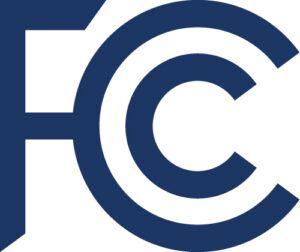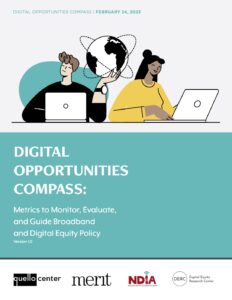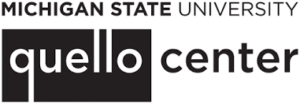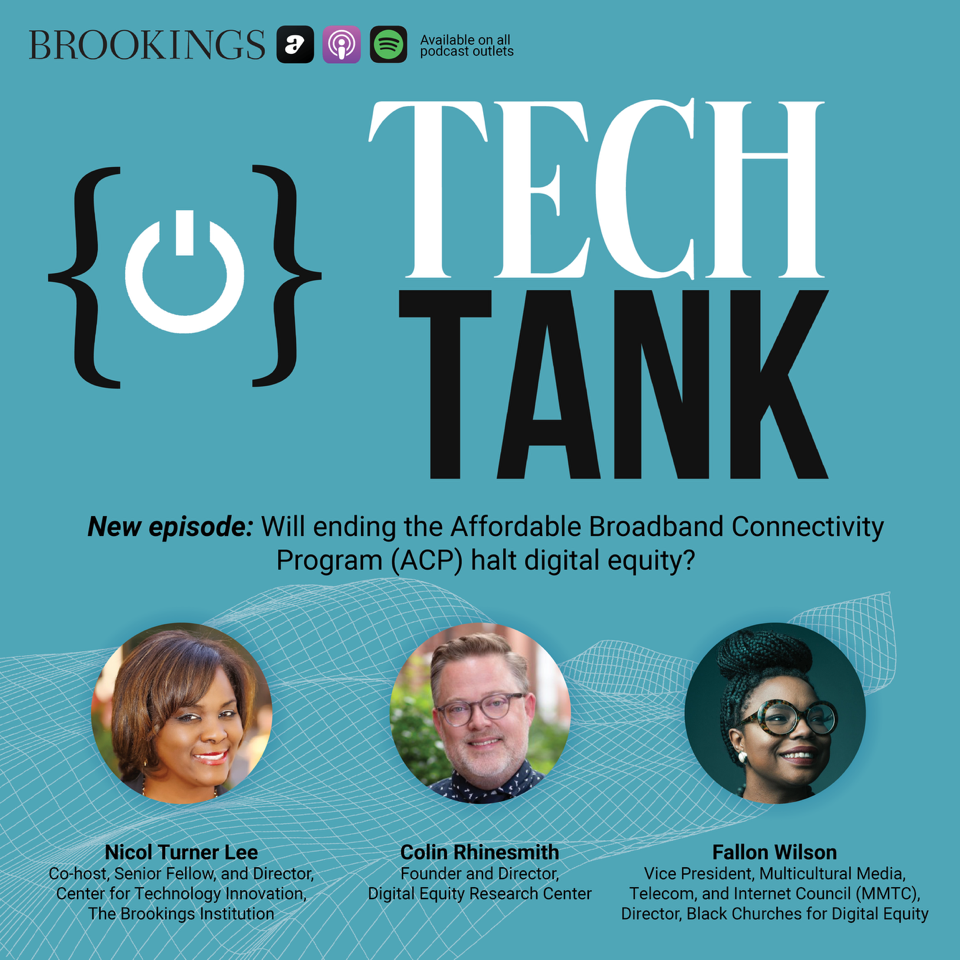It was an honor to join Dr. Nicol Turner Lee, Senior Fellow, Director of the Center for Technology Innovation at The Brookings Institution, and the host of the Brookings Tech Tank podcast, alongside Dr. Fallon Wilson, Vice President of MMTC and Director of Black Churches for Digital Equity to discuss the upcoming end of the Affordable Connectivity Program and its potential impacts on digital equity efforts nationwide.
Category Archives: Broadband
FCC Task Force to Prevent Digital Discrimination Listening Session Comments
 The Federal Communications Commission’s Task Force to Prevent Digital Discrimination held a public listening session at Medger Evers College in Brooklyn yesterday. As part of the event, the FCC invited several speakers from a diverse group of organizations representing communities impacted by digital discrimination to provide their comments that could be included in the public record as part of the FCC’s inquiry.
The Federal Communications Commission’s Task Force to Prevent Digital Discrimination held a public listening session at Medger Evers College in Brooklyn yesterday. As part of the event, the FCC invited several speakers from a diverse group of organizations representing communities impacted by digital discrimination to provide their comments that could be included in the public record as part of the FCC’s inquiry.
As the FCC’s event page describes (and lists the speakers invited), the purpose of the listening session was to “gain additional information and understanding from affected communities, state, local, and Tribal governments, public interest advocates, and providers about challenges, barriers and experiences in ensuring all people of the United States benefit from equal access to broadband.”
Here are the remarks that I delivered along with the presentation that Becca Quon, Program Manger at the Digital Equity Research Center created for the event:
“Hello, everyone,
My name is Colin Rhinesmith, I am the Founder and Director of the Digital Equity Research Center located at the Metropolitan New York Library Council.
The Digital Equity Research Center is an applied research center that assumes digital inequality research must include analyses of historical injustice, systemic racism, and other structural inequalities in order to understand and address the root causes of the digital divide. This is one of the reasons why I am so glad the FCC is focused on understanding and defining Digital Discrimination as part of its work.
I am here today not only to share research findings from our work and others’ work to help inform the FCC in how it thinks about Digital Discrimination, but also to underscore the importance of key indicator collection and measurement data needed to advance digital equity and justice here in New York City and throughout the state.
In doing so, I want to highlight a report, titled ‘Achieving Digital Equity in New York.’ The report was published in 2021 by my colleague Lauren Moore, the Assistant Commissioner for Libraries and the State Librarian of New York.
The report identifies ‘the disproportionate access to digital resources that can be traced back to a wealth gap that has existed since 1950.’ The report goes on to say that ‘Historically, resources have gone to higher-income neighborhoods. This disproportionality continues today. Poverty and historical and structural racism are also at play; lack of or underinvestment in poor Black and brown communities such as the Bronx continues, resulting in many residents not having access to the internet at home.’
Not only should the FCC consider this history in its study of Digital Discrimination, it should also look at how the agency can help provide additional support specifically to areas of the country that have been discriminated against.
In response to this historical and technological discrimination, the FCC should help to create and support thriving digital equity ecosystems. The State Librarian’s report emphasizes that digital equity ecosystems require ‘the coordination, cooperation, and the intentional capacity-building of the many organizations supporting digital inclusion across New York.’
Towards this goal, I encourage the FCC to review findings of our report titled ‘Digital Equity Ecosystems Measurement Framework,’ which was published last year by the Metropolitan New York Library Council.
The report presents findings from a participatory research project with thirty-two digital equity and digital justice coalition leaders from across the United States, including several here in New York, who contributed their ideas to inform the framework. This work also responds to our State Librarian’s call for coordination and capacity-building by providing measurement tools to assist local coalitions in gathering data for planning, improvement, and advocacy purposes.
In its outline for collaborative change, our State Librarian’s report recommends shifting the focus of the work to address and prevent Digital Discrimination from digital equity to digital justice, stating,
‘It’s impossible to separate the root causes of digital inequity from the root causes of racism, opportunity gaps, and other systems of oppression.’
Based on these findings, which are echoed by research undertaken by our Center, I urge the FCC to move beyond using individual consumer-level indicators, such as internet speeds and quality of service measures alone in their inquiry. Rather, the FCC should undertake a more holistic community-level approach using equity indicators, such as those identified by the City University of New York’s Institute for State and Local Governance. I believe this approach to data-driven and equity-focused policymaking can assist the FCC in its efforts to combat digital discrimination while also using tools to learn about the conditions for disadvantaged groups, the disparities influencing their members, and whether those disparities are improving among specific sociodemographic communities, indicators provided by CUNY’s institute.
In closing, I applaud the FCC for leading this important work and hope the agency will see the Digital Equity Research Center as a partner in helping to create and sustain healthy digital equity ecosystems here in New York and across the country.
Thank you for listening.”
New Working Paper: The Digital Opportunities Compass
 As states across the U.S. develop their digital equity plans this year, as part of the National Telecommunications and Information Administration’s BEAD and DEA grant programs, a comprehensive and holistic framework is needed to evaluate the outcomes and impacts of these federal investments to advance digital equity in the years to come.
As states across the U.S. develop their digital equity plans this year, as part of the National Telecommunications and Information Administration’s BEAD and DEA grant programs, a comprehensive and holistic framework is needed to evaluate the outcomes and impacts of these federal investments to advance digital equity in the years to come.
In response, my colleagues and I have developed a working paper, titled “The Digital Opportunities Compass: Metrics to Monitor, Evaluate, and Guide Broadband and Digital Equity Policy.” The paper was published yesterday by the Quello Center for Media and Information Policy at Michigan State University, where I am a Research Fellow.
Here is a snippet from the Executive Summary of the report:
This working paper introduces a measurement framework to guide state and local policy in the United States at a moment of unprecedented investment in broadband infrastructure and digital equity nationwide. The Infrastructure Investment and Jobs Act of 2021 (IIJA), together with the Digital Equity Act (DEA) included in IIJA, allocated 65 billion dollars to ensure that all Americans have access to affordable, high speed internet service–a prerequisite to achieve broader outcomes, such as ‘economic success, educational achievement, positive health outcomes, social inclusion, and civic engagement.’
The IIJA includes five categories of measurable objectives to assist states in documenting and promoting: (1) the availability of, and affordability of access to, fixed and wireless broadband technology; (2) the online accessibility and inclusivity of public resources and services; (3) digital literacy; (4) awareness of, and the use of, measures to secure the online privacy of, and cybersecurity with respect to, an individual; and (5) the availability and affordability of consumer devices and technical support for those devices. The law is explicit in its goal to ensure that covered populations, or those most impacted by digital inequalities, benefit from these efforts.
The ‘Digital Opportunities Compass’ framework builds on these core metrics and expands them in important ways. It builds on over 25 years of research and experience related to how broadband and device access, affordability, and digital skills relate to digital equity and broader social and development outcomes. This body or experience suggests that digital equity can be achieved more sustainably if the entire broadband ecosystem is considered. The framework is intended to assist stakeholders interested in metrics to monitor, evaluate, and guide broadband and digital equity policy now and in the future.”
Download the full report on the Quello Center’s website.
Update on February, 28, 2023: The Benton Institute for Broadband & Society has published our overview of the report, titled “Digital Opportunities Compass” on their Digital Beat blog.
Missing Pieces: How the FCC’s Broadband Map Misrepresents Public Libraries
Back in December, I responded to an open invitation from John Windhausen, Executive Director of the Schools, Health, & Libraries Broadband (SHLB) Coalition, during the monthly SHLB Coalition member policy call, to take a closer look at how the Federal Communications Commission’s (FCC) Broadband Map represents community anchor institutions (CAIs). I thought this would be a great opportunity to look at how public libraries are represented on the map and to help make sure public libraries, and other anchor institutions, have the opportunity to receive funding through the NTIA’s Broadband and Digital Equity grant programs.
This week, the SHLB Coalition and the American Library Association submitted an ex parte filing with information about our meeting on Monday with FCC staff. Attached to this filing was my report, titled “Missing Pieces: How the FCC’s Broadband Map Misrepresents Public Libraries.” Here is the abstract from the paper:
The Federal Communications Commission (FCC) recently released a “pre-production” draft of their National Broadband Map in an effort to provide more precise details about where internet service does and does not exist in individual locations across the U.S. While much attention has been paid to how the map represents broadband service for individual households, there is much less understanding among the general public with regards to how the map represents individual community anchor institutions, such as public schools, libraries, and hospitals. In an effort to address this gap in public understanding, and to help contribute to improving the FCC’s Broadband Map overall, this paper presents findings from a study of 200 public libraries in 20 states across the U.S. to gain a better understanding of the following: (1) whether public libraries are classified as “broadband serviceable” or not; (2) whether public library buildings are classified as “residential” or not; and (3) the level of service that public library buildings receive in individual locations. The findings from this study raise important questions about whether the FCC’s current process allows for public challenges to correct these mis-classifications. Recommendations are provided at the end of this report to help ensure that the map helps to address the broadband needs of community anchor institutions across the country. Methodology This section describes the overall approach and methods used for the study.
I hope that the ex parte filing and the report itself is helpful to public libraries and those working to ensure that the NTIA’s broadband and digital equity grant programs respond to what is required by law in H.R.3684 – Infrastructure Investment and Jobs Act.
Joining The Quello Center at Michigan State University
 I’m thrilled to announce that I am joining The Quello Center at Michigan State University as a Research Fellow. I have been a huge fan of The Quello Center’s work for many years, and I’ve also had the opportunity to work closely with several members of The Quello Center community.
I’m thrilled to announce that I am joining The Quello Center at Michigan State University as a Research Fellow. I have been a huge fan of The Quello Center’s work for many years, and I’ve also had the opportunity to work closely with several members of The Quello Center community.
I look forward to supporting the center’s broadband and digital inclusion work through my own research on digital equity ecosystems. I am particularly interested in investigating the role of research and education networks (RENs) in helping to advance digital equity either directly or indirectly through their work supporting anchor institutions in communities across the United States.

